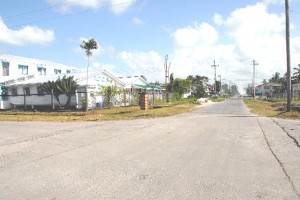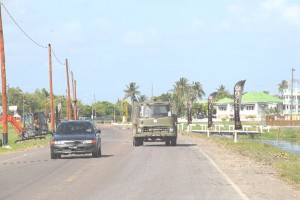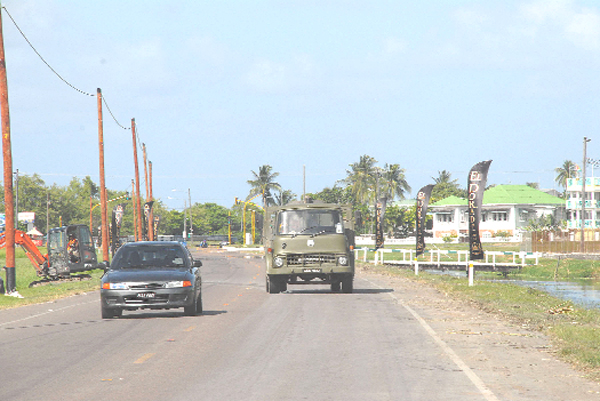Historian Tommy Payne reflects on the origins of the Caribbean Festival of Arts and the reverberation of the inaugural event across space and time
The song released for CARIFESTA X embraces the sentiments of pride, responsibility and determination. This, it seems, in order that the event may achieve the outcomes envisioned by the host country, Guyana..

Pride, because the genesis of CARIFESTA was here in Guyana. That, quite simply, is a historical fact that cannot be denied. Reference to the staging of “the very first celebration of Caribbean Arts … in Puerto Rico in 1952” merely underscores the fact that this event was a ‘one-off occurrence, strengthening the truism that Guyana was the birthplace of CARIFESTA. .
The return of CARIFESTA to Guyana thirty-six years later, brings with it the attendant responsibility of effectively emplacing the decisions embodied in “The New CARIFESTA – Strategic Plan 2004”. Trinidad & Tobago, the host of CARIFESTA IX in 2006 conceded falling short of fulfilling the agreed goals for the ‘reinvention of CARIFESTA’. Not only did the review of the 2006 event by Azad Ali, Chief Reporter of the TnT Mirror bear the disheartening caption “CARIFESTA CRASHES,” but the body of the review specified that, “the ninth CARIFESTA, which comes to an end this Sunday at the Hasley Crawford Stadium, Port of Spain, has flopped. Chairman of the organizing committee Louis Lee Sing was equally blunt. about the outcome of the event. It was, he said, “a big mess”.

It is therefore entirely understandable that the Government of Guyana, whose belated decision to host CARIFESTA X ensures adherence to the two-year cycle specified by the ‘Strategic Plan 2004’, is determined to ensure that the event realizes the ‘reinvention of CARIFESTA’.
What makes this determination more critical is the fact that the main Opposition Party, the Peoples National Congress Reform (PNCR), has taken the position that the current socio-economic situation of Guyana does not allow for the successful realization of this bold, albeit laudable, initiative.
The worrisome state of Guyana’s socio-economic condition cannot be seriously denied. The recent spate of wanton and, thus far, unsolved crimes speaks to the need for professional and independent investigation perhaps with the support of the competent institutions from this very region. Then there is the scourge of the narco trade and the creeping sense of disaffection afflicting a large section of the Guyanese population, a condition considerably exacerbated by the global crises of skyrocketing food and fuel prices.
And yet, those inclined towards clinical and unvarnished reflection are bound to recall that, though miniscule by comparison, the challenges that faced the Burnham administration during that period, including that of seeking to heal the disaffections spawned by the ethnic conflict that preceded Independence, made the decision to host the first CARIFESTA an equally bold one and one which, it will be recalled, secured the less than wholehearted support of the then political opposition.
I recall taking my own first steps into serious research in Guyanese history and the resultant preparation of a paper titled “Cohesion in Society” published in the first two issues of IMPACT the journal of the Institute of Decolonisation (INDECOL) which paper highlighted historical precedents for cohesion. I argued then that the pre-independence conflict had ended not because of the stratagems of the politicians but because the broad masses wanted a cohesive society.
Back in 1972, the vigour of youthful nationhood proved a useful buffer to socio-economic concerns. More significantly, the mass espousal of cohesion was reinforced by a set of symbolic occurrences at the political level. – the spontaneous bear-hug between Forbes Burnham and Cheddi Jagan when the colonial flag was replaced by the “Golden Arrowhead” at the dawning of May 26th, 1966; the defiant and symbolical attack at the Victoria Law Courts compound in 1954;; the use of February 23rd – first hailed as a historic date by the PPP Administration in its 1958 History and Culture Week celebrations – as the date for the launching the Cooperative Republic of Guyana in 1970 and. the 1971 nationalisation of the Demerara Bauxite Company (DEMBA) which ushered in the process of owning and controlling the commanding heights of the economy, a concept that was embraced by both the PNC and the PPP..
Whatever niggling doubts remained were entirely submerged beneath the tremendous enthusiasm generated in response to the national challenge of staging CARIFESTA 1972.
The event secured iconic stature, exerting a dramatic and positive influence on those who participated therein as well as on those who were fortunate enough to otherwise experience the event.
Dr. Paloma Mohamed Martin, the Artistic Director of CARIFESTA X, recounted her own sense of awe when she beheld the dramatic symbol of the CARIFESTA ‘72 logo – a hand grasping the sun between its fingers – and Bam-Bam Sally parading its way through the streets as part of the event; and Dr. Mohamed-Martin is altogether convinced that though quite young at the time, her subsequent devotion and achievements as an outstanding member of the Guyanese ‘literati’ were triggered by the impact of CARIFESTA ‘72.
Similarly, Henck Tjon, Suriname’s Director of Culture, in an impromptu address delivered to the participants at the “CARIFESTA X Technical Theatre Courses”, spoke in glowing terms of ‘72 -highlighting the appropriateness of “Festival City” where the artistes from the many participating countries met in a mess hall that simply never closed to use their music, dance, drama and drumming as means of crossing the barriers of language and dislodging the ramparts of parochialism. Those pursuits in cultural communication also underlined the significance of Burnham’s Carifesta 72 opening address which spoke to a unity of purpose that would link independent countries and colonial territories of what was in effect the ‘Caribbean Basin’ in the revolutionary task of using our rich and related cultures to make a pronounced impact on the wider world.
I believe that all who were fortunate to witness any of the presentations at CARIFESTA ’72 revelled in the sense of spiritual enrichment that they evoked.. For me, the splendour of the Jamaica Dance Company whirling and flouncing in their lily-white robes in the performance of “Pocomania,” the mystique of the Haitian dance presentation, and the dramatic forcefulness of the Surinamese Robin Dobru’s poetry were among the landmark performances of the inaugural CARIFESTA.
CARIFESTA 1972 was, in the view of many, and up until now, an unparalled success: In the succeeding years Jamaica (1976), Cuba (1979), Barbados (1981), Trinidad and Tobago (1991), Trinidad and Tobago (1995), St. Kitts and Nevis (2000), Suriname (2003) and Trinidad and Tobago (2006) served as the venues where myriad countries lent their music, dance, drama, folklore, craft, intellectuals – in sum the quintessence of their national culture – to transform the respective host country into cultural meccas for the duration of the Festival. In the process there were significant ‘add-ons’ to the 1972 template- the honouring of outstanding cultural personalities; the adoption of the concept of the Community Festival and the debates of The Suriname Symposia that determined the need for ‘the reinvention of CARIFESTA’.
Anyone with even a modicum of respect for Forbes Burnham must surely accept that faced with the option of breaking the momentum of a festival that is a fitting tribute to his vision, Guyana’s decision to host CARIFESTA X, was both particularly fitting and altogether appropriate. Indeed, it may even turn out that the spontaneity and splendour of May 26,1966 will witness a fitting parallel on August 22, 2008.

